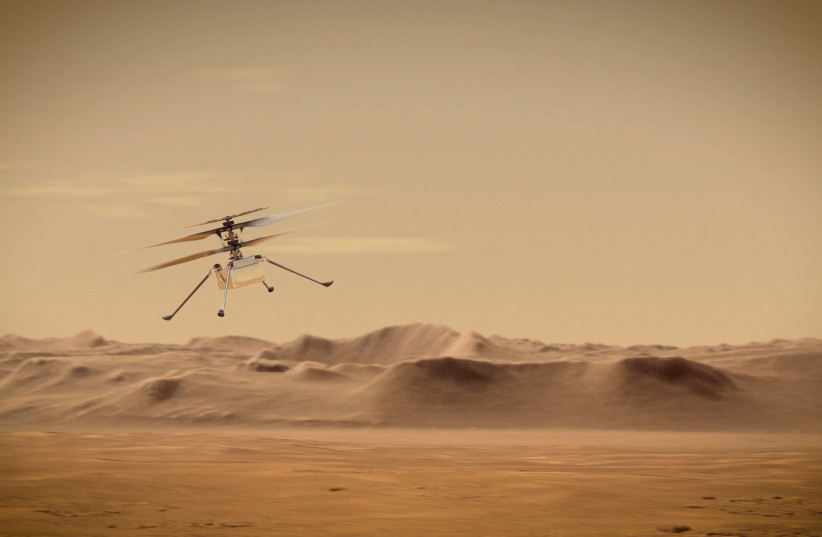A team of “astronauts” has come to the Mitzpe Ramon Crater to launch the AMADEE-20 Mars analog mission, simulating the environment of the Red Planet.
The mission is the latest Mars analog mission launched by the Austrian Space Forum (OeWF) and is being done in partnership with the Israel Space Agency (ISA) and the D-MARS habitat.
It features a team of analog astronauts from 25 different countries, with the Mission Support Center operating out of Austria. These “astronauts” will live together in a habitat in the Ramon Crater designed to replicate the conditions of Mars.
#Countdown T-1 The isolation phase of our simulation #AMADEE20 in Israel starts tomorrow! The teams from 25 nations are counting the hours. All about the mission https://t.co/9Sd1rCH10u@ILSpaceAgency @DMarsAnalog #simulateMars #ExploringTomorrow pic.twitter.com/CTRPs2mbWA
— Austr. Space Forum (@oewf) October 10, 2021
Rather than fully recreating the Martian atmosphere, however, what is most important about the habitat is how the “astronauts” get into character.
“If you feel the Martian atmosphere on Mars, you’re probably dead,” said Sophie Gruber of the AMADEE-20 leadership team. “We don’t want to simulate the atmosphere, because exposure to it wouldn’t happen without dying and is [therefore] irrelevant.”
The habitat has an airlock, and the analog astronauts will be required to wear spacesuits when exiting it, just as they would have to do on Mars itself, she said.

The purpose of the mission, which officially begins October 11 and lasts until the end of the month, is to perform a number of experiments in conditions as similar to Mars as possible.
Simulating these conditions can be very difficult, though.
“The only perfect analog for Mars is Mars,” Gruber said. “You can’t find another one that comes close. So we looked for aspects we wanted to simulate.”
Previous Mars analog missions launched by the OeWF took place in other locations, including Austria and Oman. In Mitzpe Ramon, the “astronauts” will run 20 experiments in various fields, including chemistry, biology, geoscience and psychology.
But the most important experiments being carried out in AMADEE-20 relate to the search for life.
This has been a major focus of recent missions to the Red Planet, so called because of the iron oxide found on its surface. In fact, the search for life is among the primary goals of NASA’s recently launched Perseverance rover and Ingenuity Mars helicopter.
At first glance, this may seem confusing, because while the existence of signs of life on Mars is questionable, their presence in the Ramon Crater has never been in dispute. But that is precisely the reason this site was chosen, Gruber said.
“We have dedicated an exploration cascade fixating on the sequence of the experiment and data flow to make sure that if we look in the particular spot in the desert, we can make sure we don’t miss anything,” she said. “We start with remote viewing from satellites; then we send drones and rovers and finally our astronauts.
“We make sure we’ve investigated it so well that we know everything about it. By using a place like the Ramon Crater, which is so well studied, as our analog, we can see how well our strategy worked by comparing our data to the data that’s already known.”
In addition to searching for signs of life, scientists want to determine if Mars could ever support life, should humanity’s plans to colonize the planet ever come to fruition. But while these goals may seem different, Gruber says otherwise.
“First, you need remote sensing and data from Earth, and you would think, ‘Yeah, there could be life,’ and then you’d look for signs of life,” she said. “Only then would you look [to see] if you could colonize. It’s not an either-or; it’s a sequence of events.”
